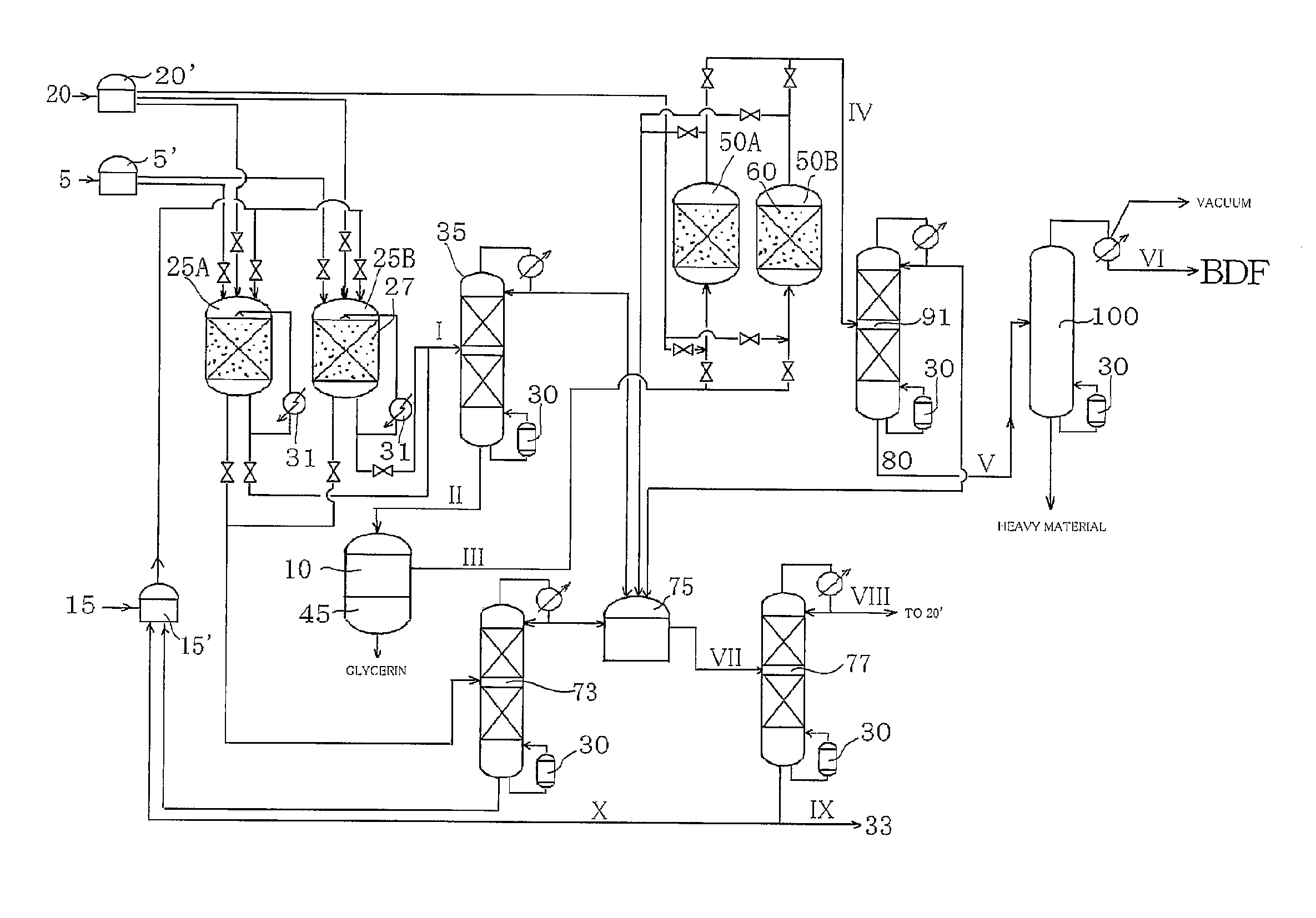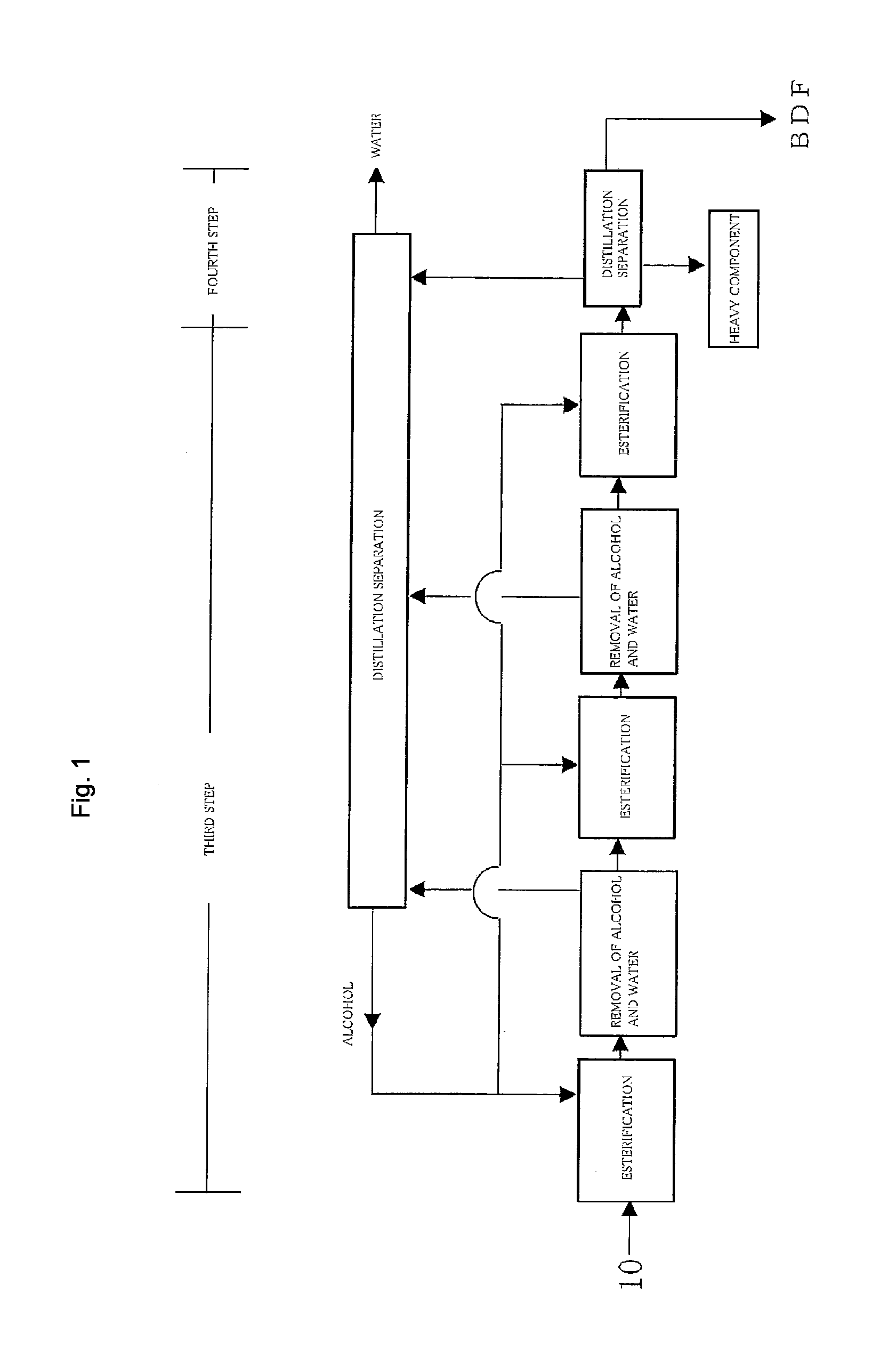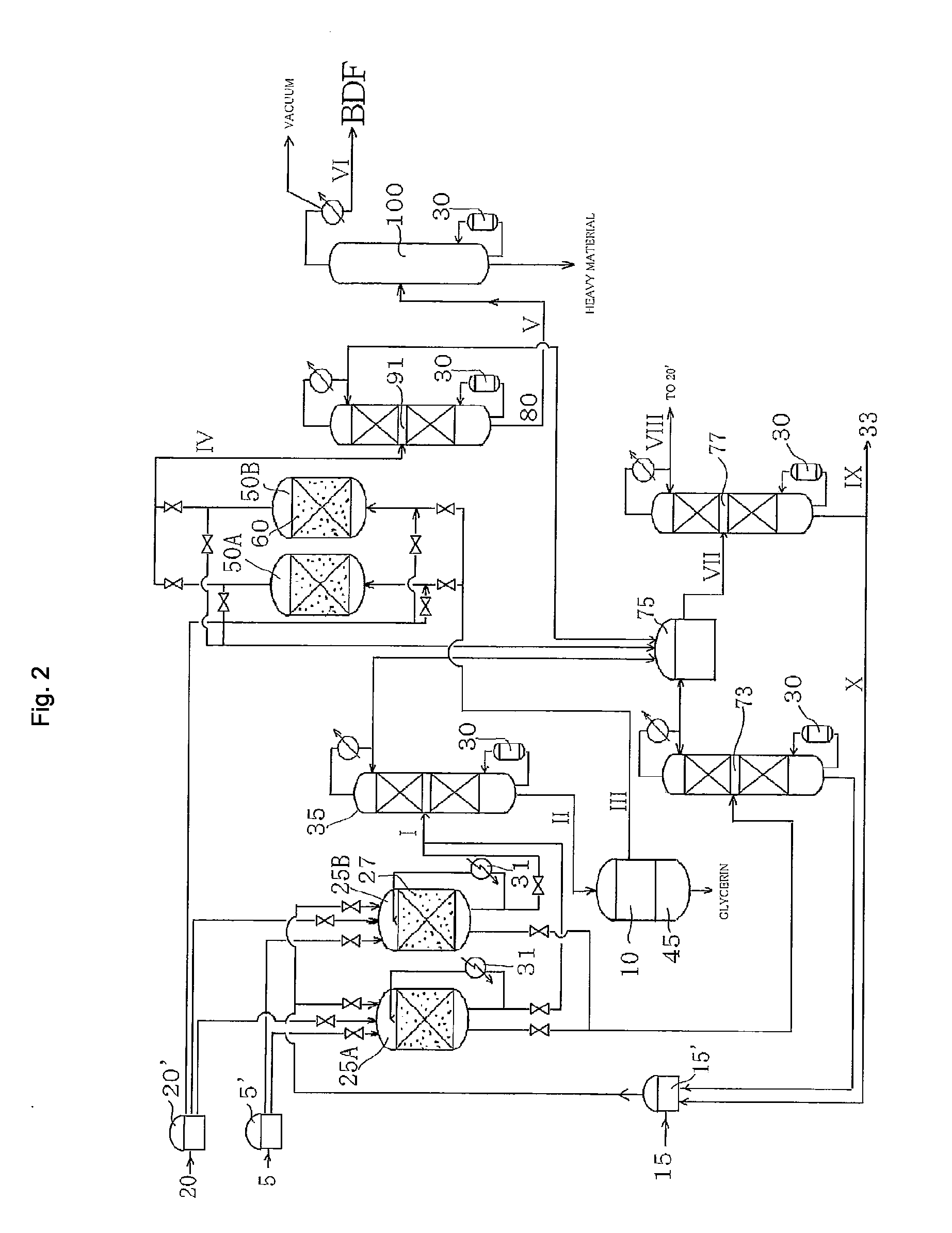Method for producing fatty acid monoesterified product using solid acid catalyst
a solid acid catalyst and fatty acid monoester technology, applied in the preparation of carboxylic compounds, fatty acid chemical modifications, fatty-oils/fats, etc., can solve the problems of difficult separation of product and catalyst, and achieve the effects of reducing production costs, efficient production, and prolonging the life of expensive catalysts
- Summary
- Abstract
- Description
- Claims
- Application Information
AI Technical Summary
Benefits of technology
Problems solved by technology
Method used
Image
Examples
production example 1
Preparation of Catalyst (1)
[0131]20 g of D-glucose was heated at 400° C. in the flow of a nitrogen gas for 15 hours to obtain a carbonaceous powder. This powder was heated at 150° C. for 15 hours, while being stirred in 200 ml of 15% by mass of fuming sulfuric acid, to obtain a black powder. The black powder was repeatedly washed in distilled water to remove sulfuric acid included in the powder to obtain a sulfonic acid group-introduced amorphous carbon (I).
[0132]The sulfonic acid density of this sulfonic acid group-introduced amorphous carbon was 1.5 mmol / g.
[0133]Also, the integrated intensity ratio of the G-band to the D-band (I(D) / I(G)) in a Raman spectrum was 0.59.
[0134]The measurement of the sulfonic acid density was performed by the following method.
[0135]Most of sulfur elements included in the above sulfone were derived from a sulfonic acid group, and therefore, the sulfur in the sample was quantified by element analysis with a fuel (SX-Elements Micro Analyzer YS-10 (yanaco) ...
production example 2
Preparation of Catalyst (2)
[0138]Operations were performed as in Production Example 1 except that a cellulose having a degree of crystallinity of 80% and a degree of polymerization of 200 to 300 was used instead of the D-glucose and that the conditions were changed to those shown in Table 1, to produce a sulfonic acid group-introduced amorphous carbon (II).
TABLE 1Concentrated sulfuricHeatingHeatingSulfonic acidProductionOrganicacid or fuming sulfurictemperaturetimedensityExampleCompoundacid(° C.)(H)(mmol / g)(I(D) / I(G))1D-glucoseFuming sulfuric acid150151.50.592CelluloseFuming sulfuric acid80102.00.55
example 1-1
[0139]2.66 g of glycerin trioleate and 0.36 g of the transesterification reaction catalyst prepared in Production Example 2 were weighed into the pressurized glass test tube of a Personal Organic Synthesizer (ChemiStation) PPS-2510 manufactured by TOKYO RIKAKIKAI CO., LTD., and 4.16 g of methanol and 0.18 g of water were added. The test tube was capped and sealed. The molar ratio of the fatty acid group constituting the glycerin trioleate to the supplied methanol (the supplied methanol / the fatty acid group) was 14.4. The amount of catalyst with respect to 1 mole of the glycerin trioleate was 121 g.
[0140]These were heated at 130° C. at a pressure of about 800 kPa for 5 hours to obtain a fatty acid monoester product reaction liquid. The yield was 95.8 (% by mass), the oleic acid was 2.5 (% by mass), and the oleic acid monoglyceride was 0 (% by mass). The composition of a liquid (vaporized liquid) distilled from the transesterification reactor was also measured. The results are shown i...
PUM
| Property | Measurement | Unit |
|---|---|---|
| pressure | aaaaa | aaaaa |
| temperature | aaaaa | aaaaa |
| pressure | aaaaa | aaaaa |
Abstract
Description
Claims
Application Information
 Login to View More
Login to View More - R&D
- Intellectual Property
- Life Sciences
- Materials
- Tech Scout
- Unparalleled Data Quality
- Higher Quality Content
- 60% Fewer Hallucinations
Browse by: Latest US Patents, China's latest patents, Technical Efficacy Thesaurus, Application Domain, Technology Topic, Popular Technical Reports.
© 2025 PatSnap. All rights reserved.Legal|Privacy policy|Modern Slavery Act Transparency Statement|Sitemap|About US| Contact US: help@patsnap.com



